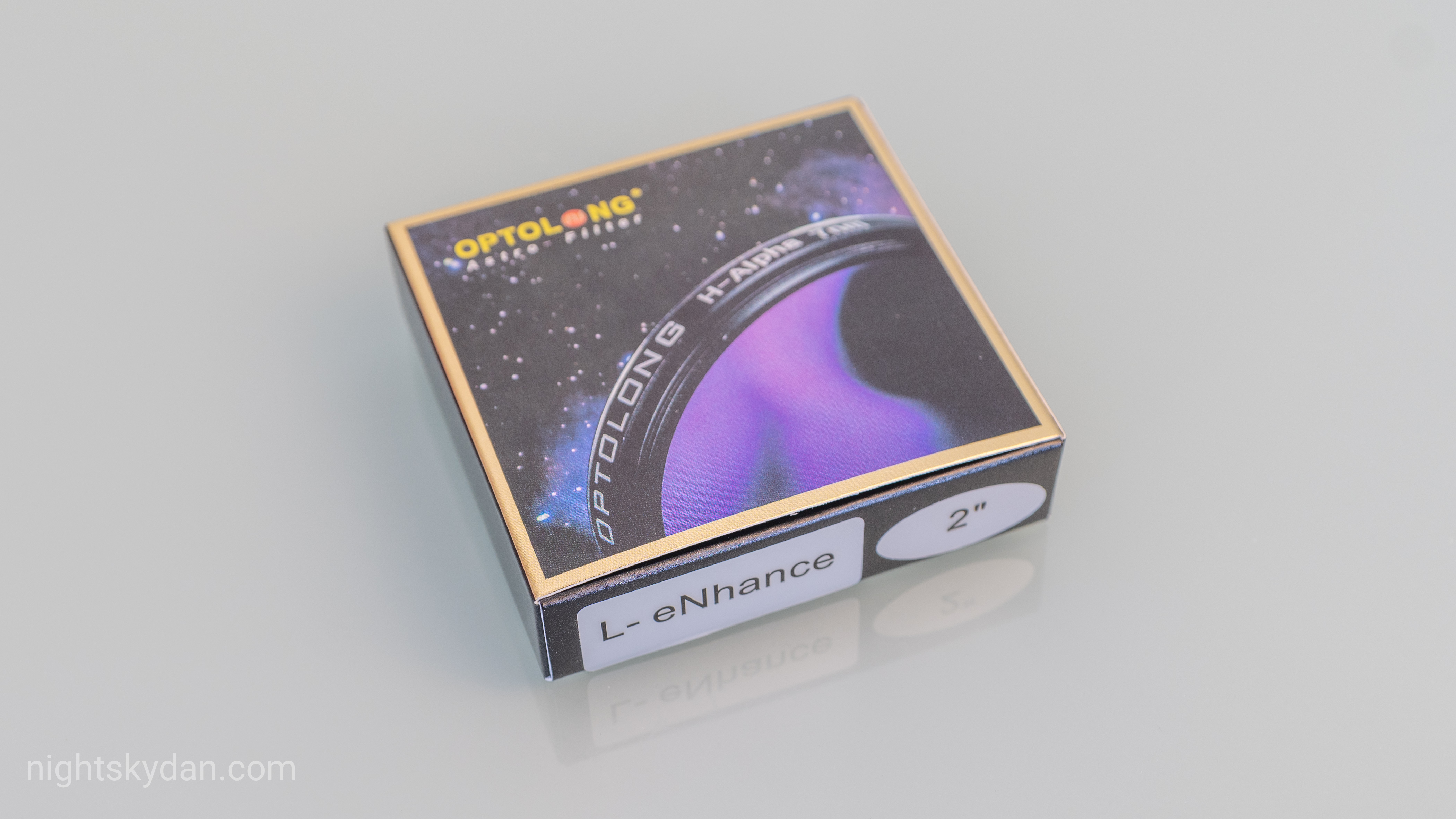
I took delivery of an interesting filter this past weekend – the newly released L-eNhance dual-band pass filter by Optolong, which I pre-ordered a few weeks prior in 2″ mounted format. In this post, I’ll share some details of this new filter, show some comparison shots between the L-eNhance and L-Pro filters, and give my verdict.
Background
As I use a one-shot-color camera with my Celestron RASA 11″ scope for deep sky imaging, I have been looking for a dual-band pass filter that would filter out most of the wavelengths apart from Hα and OIII. The benefit of this being I wouldn’t have to manually change filters during an imaging session – instead, all frames are captured with the one filter using a color camera.
Having been pleased with my L-Pro broadband light pollution filter from Optolong (you can see some sample images on my Astro Images page), I decided to order their new L-eNhance filter and give it a try.
This is the first post on my newly launched website. Please comment below if you have any feedback or questions, and thanks for reading!
The Filter
Most narrowband filters are designed to let in one particular wavelength of light, such as Hα, OIII or SII.
The L-eNhance filter is a dual-band pass narrowband filter that blocks most wavelengths apart from the narrow bands of Hα and OIII (plus Hβ), making it most suitable for use with one-shot-color cameras when imaging emission nebulae.

According to a post on the Cloudy Nights forum, the bandwidth/FWHM for Hα is 10nm and OIII is 24nm. This should (in theory) make it ideally suited to a fast imaging system like my Celestron RASA 11″ at f/2.2, or with a Starizona HyperStar setup. If the bands are too narrow, this can cause issues when imaging with a very fast scope.

I currently use my RASA with a ZWO ASI294MC Pro camera and the L-Pro filter from Optolong. Imaging under the heavily light polluted night sky of the San Francisco Bay Area (Bortle class 8 in my location, according to Clear Outside), the L-Pro filter, combined with the powerful processing capabilities in PixInsight, has helped me capture various deep sky objects such as galaxies and nebulae. So I’m hoping the L-eNhance filter will further boost the contrast and detail of nebulae in my images.

Setup
I use the Universal Filter Changer (UFC) system by Baader, so I’ve mounted the L-eNhance filter in to the 2″ slider for this test.

I’ll be using the ZWO ASI294MC Pro – a one-shot-color camera – mounted to the front of a Celestron RASA 11″. The filter slider is positioned close to the camera, to minimize vignetting.

With this setup I don’t tend to bother using flat frames when I’ve used the 2″ L-Pro filter – there’s hardly any vignetting, and dust specks haven’t caused problems when imaging at f/2.2.
When stacking my data, I just use 100 dark frames and do away with any bias or flat frames (the short bias frames aren’t particularly good or useful with this camera apparently). Any odd gradients in my images tend to come from the effects of heavy light pollution, which flat frames won’t help fix, so I just use PixInsight to fix the background gradients in editing.

Target
For this test, I’ll be imaging the Western Veil Nebula (NGC 6960). I captured some data of this nebula a few weeks ago using the L-Pro filter during a new moon, so I’ll compare that L-Pro data with L-eNhance data captured on June 17th (full moon). This may not be a fair comparison, due to the large amount of moonlight, but it will be interesting to see how this filter copes under a full moon.
I’ll be using Sequence Generator Pro to capture 40 x 60-second frames at unity gain, with the camera temperature set to -15°C. PHD2 will be used for guiding and dithering between each frame.
The light frames will be stacked using the BatchPreprocessing script in PixInsight, along with 100 dark frames. No bias or flat frames will be used.
After stacking I’ll make some basic edits using PixInsight – to remove background gradients, correct the color balance, and remove the green color cast, plus an auto-stretch. Specifically, I’ll perform the following after stacking:
- DynamicBackgroundExtraction
- BackgroundNeutralization
- ColorCalibration
- SCNR
- Auto-stretch
To summarize, I’ll be comparing two sets of Western Veil Nebula data:
- 40 frames captured on June 3, 2019 (new moon) using the Optolong L-Pro filter
- 40 frames captured on June 17, 2019 (full moon) using the Optolong L-eNhance filter
Results
After stacking the data in PixInsight, I opened up both the L-Pro and L-eNhance versions of the Western Veil Nebula and did an auto-stretch (with the channels unlinked). Here is a comparison of the raw stacked image, with the L-Pro version on the left, and L-eNhance version on the right (move the slider left-to-right):
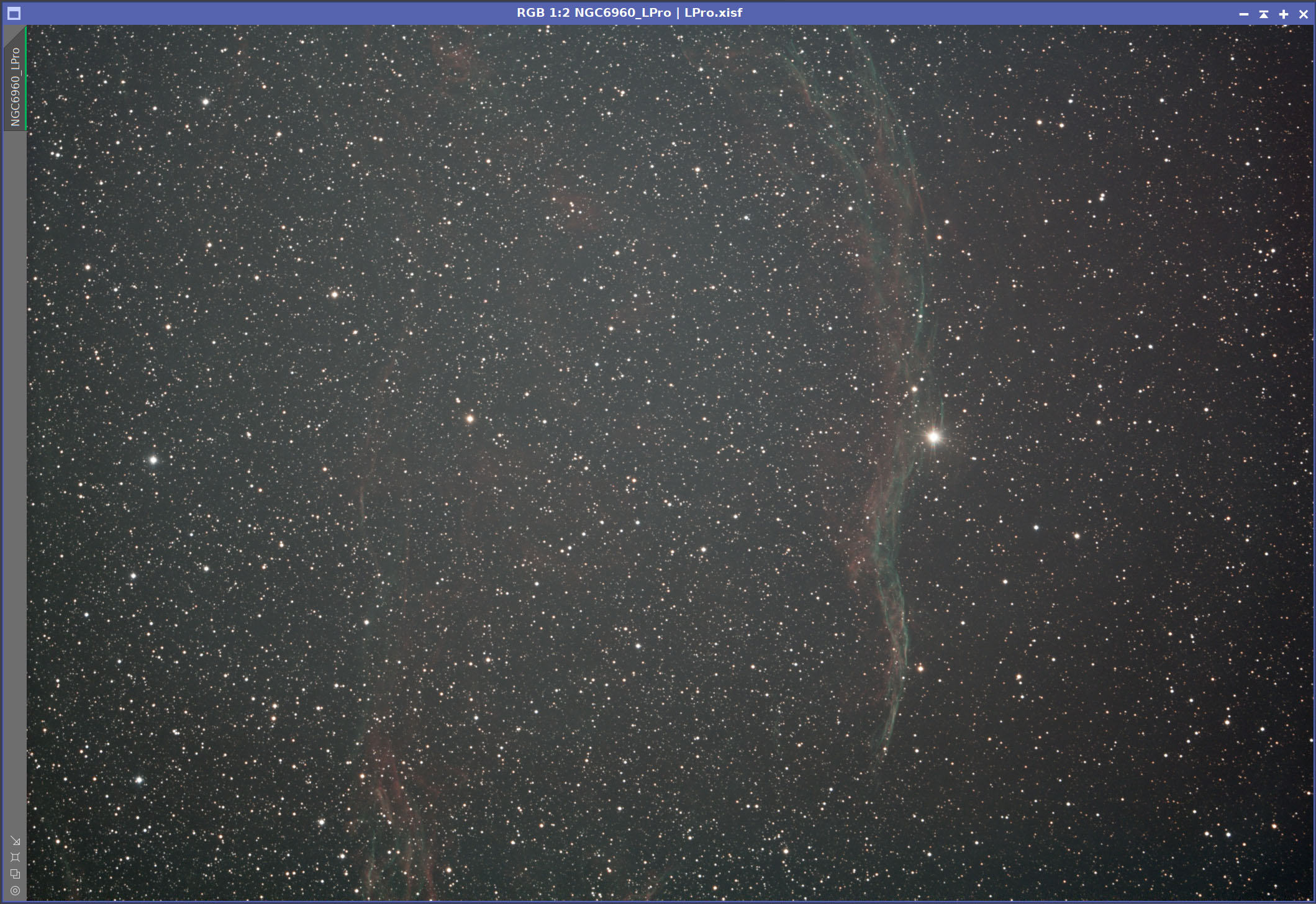
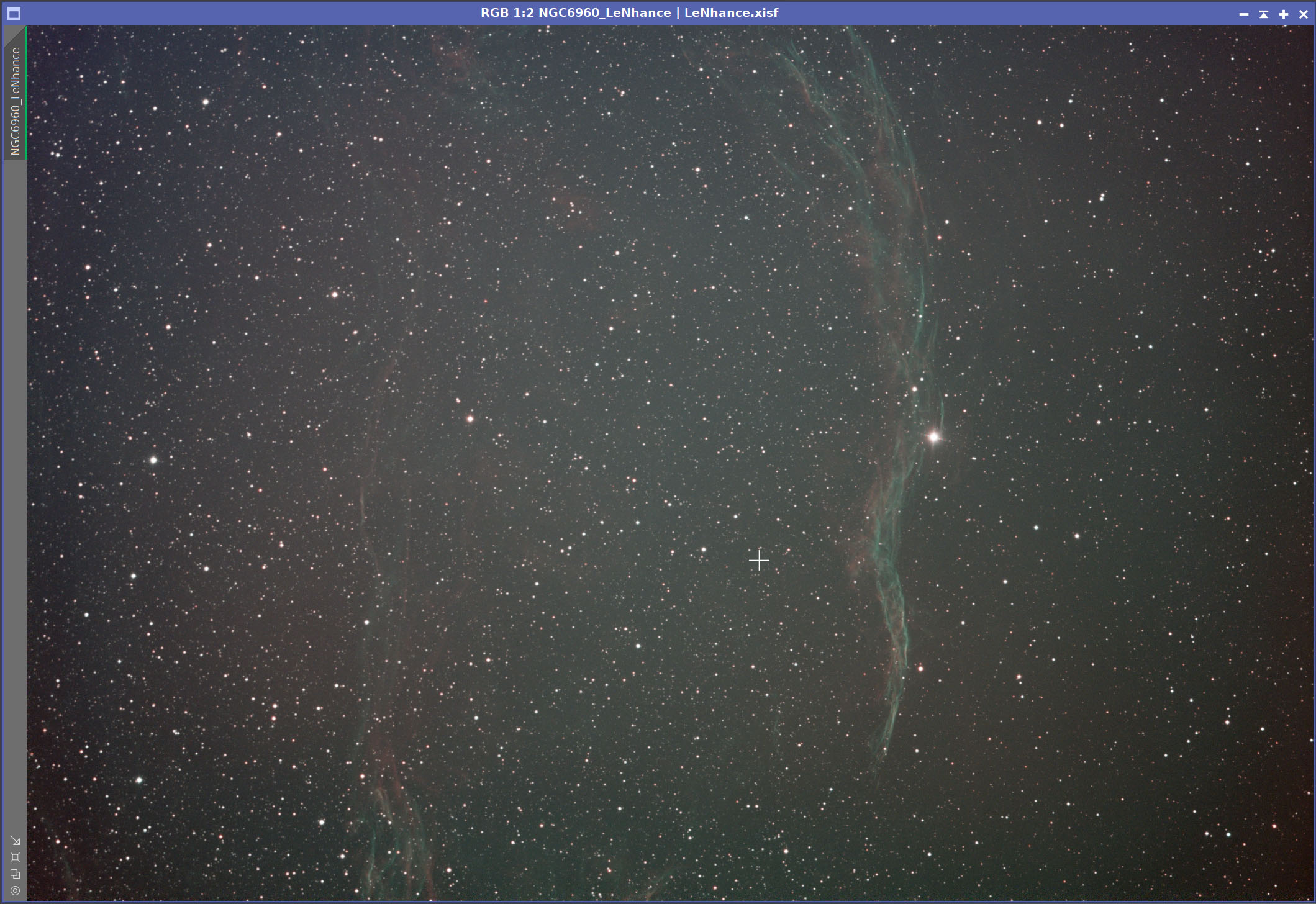
Immediately, I notice a few things in the auto-stretched versions:
- The L-eNhance version has much reduced star sizes, which is a nice side-effect of using a narrowband filter;
- There is more nebulosity in the L-eNhance data, especially in the OIII channel;
- There doesn’t appear to be much difference in the Hα (red) channel;
- The L-Pro has a better overall background – the L-eNhance version has more gradients (I guess caused by the full moon), and some odd large red blotches toward the left of the image. I’ll try cleaning this up with DynamicBackgroundExtraction.
Next, I’ve performed a DynamicBackgroundExtraction on both versions, followed by an auto-stretch (unlinked channels):
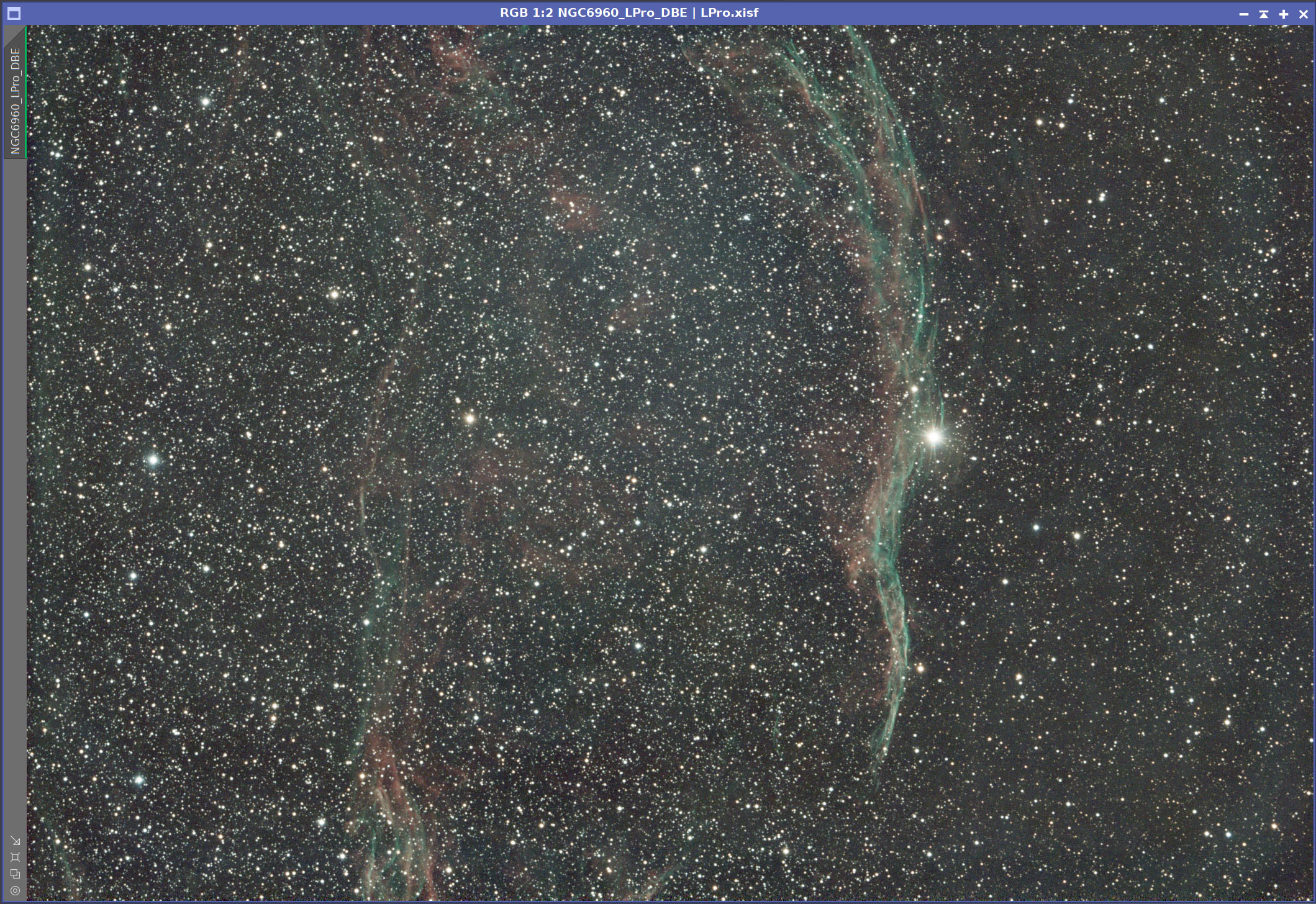
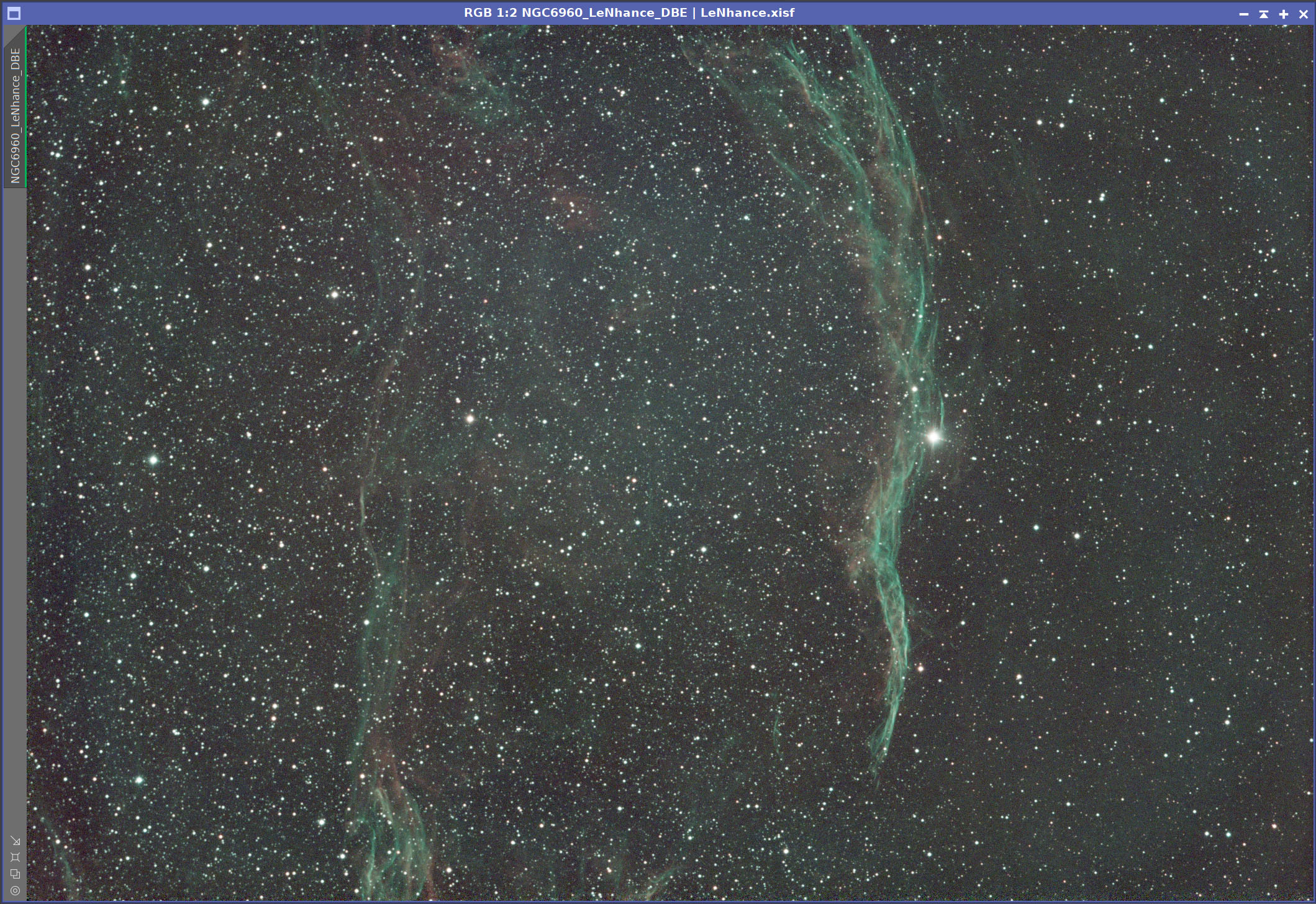
DynamicBackgroundExtraction helped to resolve most of the gradient issues, as shown above. I could spend more time further improving the background though.
I then used BackgroundNeutralization, ColorCalibration, and SCNR to correct the colors, followed by another auto-stretch (linked channels) to give this result:
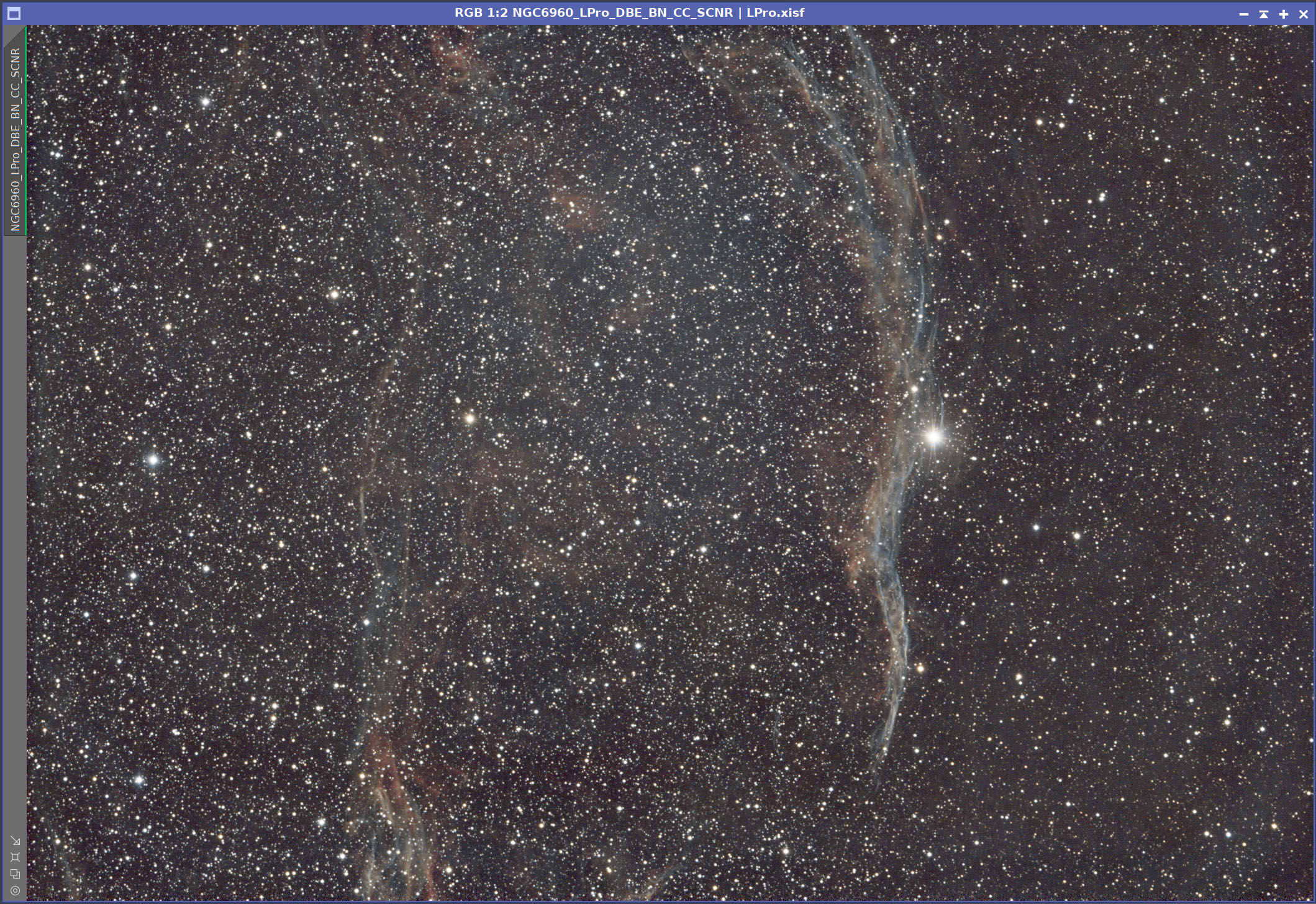
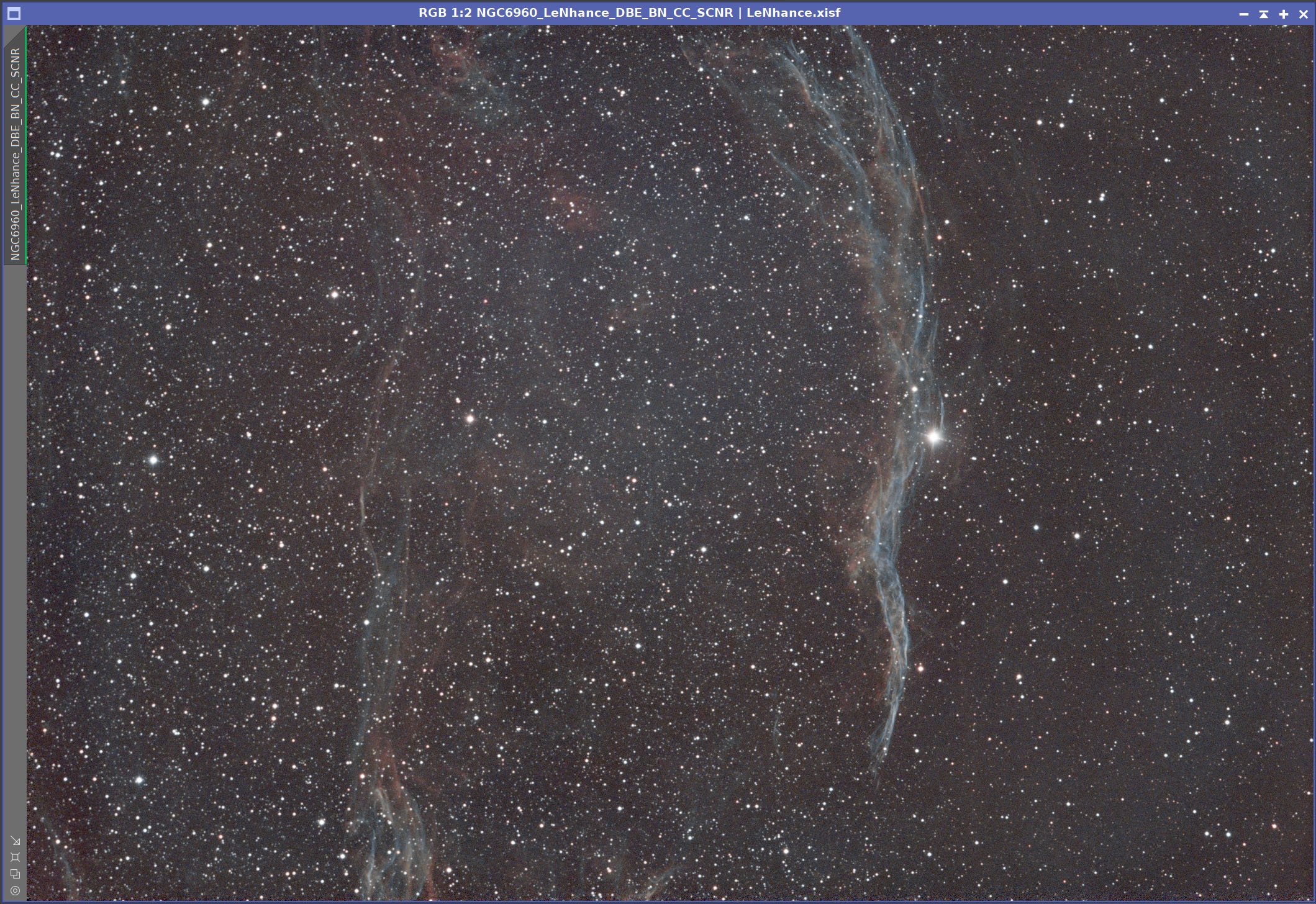
I do prefer the L-eNhance version, because of the smaller, less-bloated stars, and the greater nebulosity in the blue channel.
However, I’m not seeing much immediate difference in the red channel. Maybe I need to do longer exposures (or capture more frames) to benefit from more Hα nebulosity, but I was concerned about going longer than 60 seconds at f/2.2 due to the full moon, which I think already caused harsher gradients. Maybe the filter would perform better during a full moon if the OIII band was narrower.
I further edited the L-eNhance version of the Western Veil Nebula in PixInsight to come up with this final edit:
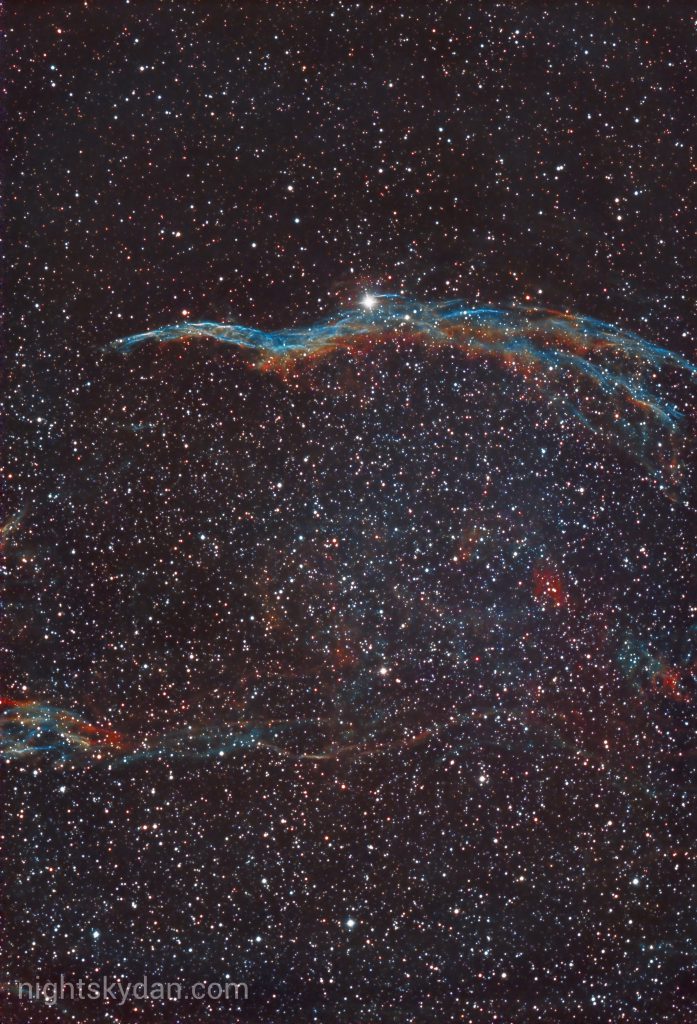
What do you think of the above results? Do let me know in the comments section below. I intend to update this review in a couple of weeks when the moon isn’t so illuminated, to see how differently the filter performs.
Additional Images
While I had my scope setup, I captured some data of the Pelican Nebula. Here is the processed image, consisting of 50 minutes of data:

And I also pointed towards part of the North America Nebula. Here is the processed image, consisting of 50 minutes of data:

All edits were done using PixInsight, with some final tweaks performed in Lightroom.
Verdict
The filter appears to work well, but admittedly I don’t often image during a full moon, so I don’t have much to compare it to at the moment. I’ll be testing the same targets again in a couple of weeks when the sky is darker to see how the results differ.
Some benefits I see of using the L-eNhance filter:
- Easier way of capturing narrowband targets using a one-shot-color camera, rather than dealing with filter changes when using a Celestron RASA and mono camera with no filter wheel;
- Imaging under a moonlit night sky is possible, but maybe under a full moon wasn’t the best idea;
- I was able to bring out more nebulosity, even during the full moon;
- Star sizes are naturally reduced, avoiding having to control this later when editing data.
I was introduced to astrophotography 35 years ago in the time of film and 45 minuet for a single exposures. I have been out of the hobby for 30 years and boy have things changed.
Imagining was and is my interest so I an very interested in the 11″ rasa
You have mentioned some of your imaging train but I am interested in the specifics.
I plan to use the 11″ rasa and ZWO ASI294MC Pro camera.
Could you provide the parts you use to connect the two so I could attempt to produce the quality of images you have done
Any help or advice would be greatly appreciated
tom b
Hi Tom,
Thanks for your comment! Yes, things have certainly changed over the years, and especially over the last couple of years with the advent of newer more sensitive astrophotography cameras, and faster scopes.
I was actually just writing a post about the Baader UFC system, you can see it here: https://www.nightskydan.com/attaching-a-zwo-camera-to-a-celestron-rasa-11/. This lists all the adapters I used, and the reasons I went with the Baader setup.
Hope that helps answer your questions! Feel free to reach out again if you need any other pointers.
Thanks,
Dan
The Lpro looks sharper and more detailed, the Enhance has a little soft or smeared look in the detail. I do prefer the enahnce because of the reduced this light (stars less busy and subdued). I’ve love to see same sky conditions. Though this target isn’t really near the moon, I’m sure it still has much lighter background sky.
I would love to see the IDAS D2 compared (which is what I use). I also have the 520.00 Lpro for the C11 which I’ve only used under full moon and did not like.
Nice comparison – thank you!
I also live in SF Bay Area. Have a smaller/slower scope (AT72EDII). Same camera – ASI294.
Have these two filters too.
I don’t use L-Enhance much (mostly use L-Pro or UVIR if in a dark site) but it is ideal for targets such as Veil.
I sometimes shoot with L-Pro and then with L-Enhance and combine the data.